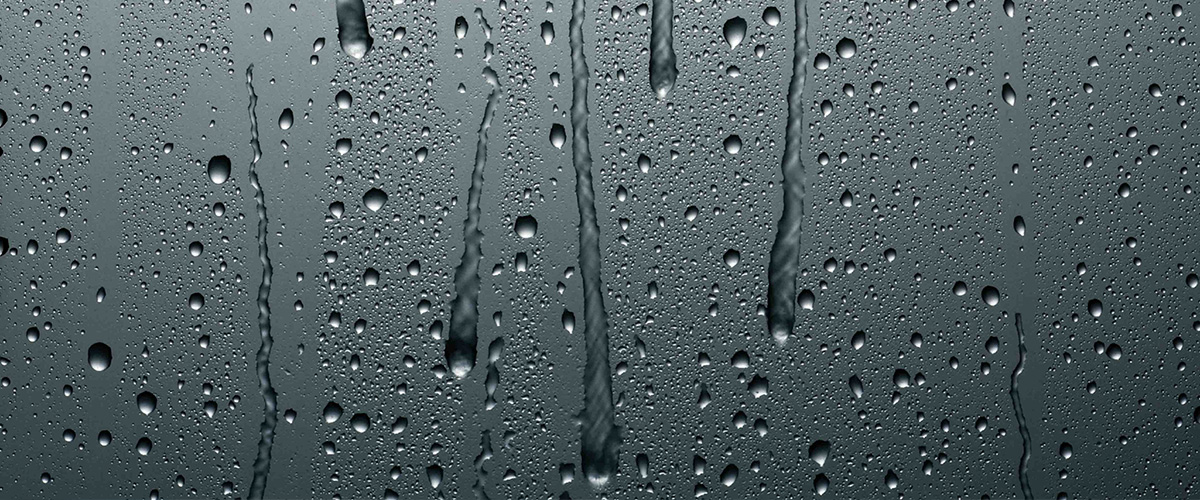Wiebe Windows & More owner Bradley Wiebe has been installing windows and doors in Saskatoon and area for over 10 years. They only install Canadian manufactured windows and doors. These products are built for the Saskatchewan climate. Wiebe Windows & More are Trusted Saskatoon Windows & Door, Experts share a window tip on prevention condensation.
Are your windows weeping? Are you struggling with condensation?
Have you noticed that the windows in your home are continually fogging up? Does it seem like they are collecting moisture? This isn’t necessarily your windows’ fault. In fact, window condensation may be an indicator of something entirely different. Your foggy windows may be an indicator that you need to reduce indoor humidity before it causes hidden, costly problems elsewhere in your home like peeling paint, rotting wood, buckling floors, insulation deterioration, mildew, even moisture spots on ceilings and walls.
Do windows cause condensation?
No. Windows do not cause condensation. But, windows are often the first place where condensation can be seen. Think about it. You’re probably not surprised or concerned when your bathroom mirror becomes fogged. You expect it after a hot shower. Your car windows fog up in humid weather or in winter when you have several passengers. These are just a few examples. And although condensation usually occurs in cold weather, it can occur during humid months when air conditioning is running. The mirror doesn’t cause the condensation. The car windows don’t cause it either. These are just the first places you actually see condensation. Check your bathroom walls after a shower – you’ll see condensation there, too. Run your finger along the wall. You’ll see water on your finger, and you’ll see the trail of your finger through the condensation on the wall.The same is true for the windows in your home.
What does cause condensation?
Condensation forms when warm, humid air contacts a cold surface. Moisture is in the air all around us. Warmer air can hold more moisture. As air cools, it contracts (just as people pull their arms and clothing tight around them when chilled) and its moisture condense. When the temperature drops, the first place you will see any condensation is on the windows. Your windows are the coldest surfaces indoors. During colder months, indoor air is much warmer and holds more moisture than outdoor air, which is colder and dry. Warm, humid indoor air cools and contracts as it contacts the cooler windows, and the moisture condenses on the glass.

How to reduce window condensation by controlling and improving ventilation
1. Leave blinds and/or drapes open as wide as possible at night and open all window coverings during the day. This will increase the warm air circulation over the cool surface and increase the temperature of the glass.
2. Check the furnace filter and replace if dirty. A dirty furnace filter will reduce the output of the furnace fan. A clean filter will ensure maximum flow.
3. Turn your humidifier off during the winter and anytime the temperature falls below 0 degrees C.
4. Always turn on the bathroom fan when bathing or showering. The best results are achieved when the fan is ducted directly to the outside. Humidistat controlled fans which automatically turn on when the humidity exceeds the setting on the switch is also available. Running the fan will also reduce the fogging of bathroom mirrors.
5. Always turn on the range fan when cooking. For best results, make certain the fan is ducted directly to the outside.
6. Ensure your clothes drier is properly ducted to the outside, no air leakage is present in the duct, and the duct is free of all blockages. Avoid hanging clothes indoors to dry.
7. Ensure fresh air intake for the furnace is free of all blockages. If your house has no fresh air intake to the furnace, have one installed.
8. Ensure all hot and cold air registers are clear of any obstruction as this could affect maximum air circulation. Avoid the use of air deflectors. Air deflectors directed towards a window can result in thermal cracks in the glass.
9. Install ceiling fans in locations where heat registers are not located close to the windows. The increase in air flow will definitely help reduce condensation on these windows. Ceiling fans should be run continuously in houses where the relative humidity is above recommended levels.
10. Floors wet from mopping can add large amounts of moisture. Run exhaust fans while floors are wet and avoid washing floors on cold days.
11. Wipe up any excess snow or moisture tracked into the house. The evaporation of the moisture will result in an increase in the relative humidity level.
12. Run your furnace fan continuously. Most furnaces are equipped with a switch which allows the furnace fan to operate even when the furnace is not producing heat. If your furnace is not equipped with this type of switch, have one installed.
13. Open doors and windows periodically to allow the dry air outside to replace the moist air inside.
14. Ensure there are no leaks in the water pipes or drains.
15. Ensure window and door frames are caulked where they meet the exterior finish of the house. This reduces the possibility of cold air infiltration which may lower the inside temperature of the window or door.
16. Remove interior screens in the winter to allow for better ventilation over the window surface. Screens will hamper the flow of air over the interior surface.
17. Patios, decks, and landings: Do not stack patio furniture or other articles near or against windows that directly cause shading or “cold spots” on your windows and doors. This reduces the effectiveness and performance of the glass. This can also lead to glass cracking.
Wiebe Windows & More -Services & Info:
"A VIEW YOU CAN TRUST"
Wiebe Windows & More are Trusted Saskatoon Windows & Door Experts!
